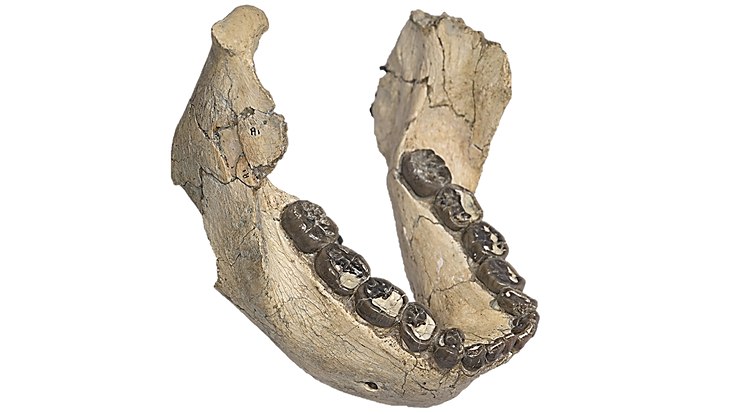
Dinosaur research at LIB
9 April 2020

Photo: Foto: UHH, Kröninger
Is this Hamburg dinosaur group a family consisting of a mother, a father, and offspring? Did young and old even live together? And what did they eat? At the beginning of the year, the Hagenbeck Foundation procured 4 completely intact skeletons of the recently discovered Suuwassea dinosaur, which will be exhibited in cooperation with the Center of Natural History (CeNak) and, hopefully one day, in a new Hamburg museum of natural history. CeNak is now studying the petrified bones of the long-necked dinosaurs. Read our conversation with evolutionary biologist and founding director Matthias Glaubrecht.

What do we know thus far about these 4 dinosaurs?
Matthias Glaubrecht: These 4, roughly 150-million-year-old skeletons from the Jurassic era of the Mesozoic period hail from the Morrison Formation in Wyoming in the northwest of the United States. The largest specimen must have measured a total of 15 meters in length. The fossils belong to the plant-eating Suuwassea genus, and they were excavated in 2009 at one and the same place. Based on this, experts have concluded that they may have belonged to the same family—which would be a scientific sensation.
What is so special about the discovery of what may be a family group?
Matthias Glaubrecht: Prior to the discovery of these 4 skeletons, the remains of the same type of dinosaur had never been found in a single group. We usually find only individual bones or skeletons. What is unusual is the discovery of the young dinosaur, which leads to new hypotheses about the rearing of plant-eating dinosaurs, or “sauropods.” Up until now, we believed that after laying their eggs, dinosaurs either, like sea tortoises, did not rear their young or, like crocodiles, did so only for a very short time.
These 4 Suuwaassea skeletons of different ages and found closely together could open a new chapter in dinosaur research. For international research, this unique “Hamburg family” is a huge win. In a private collection, this treasure would have been lost to both Hamburg as a center of science and research as well as to international research.
What are the next steps? How do you study dinosaur bones?
Matthias Glaubrecht: In the last year, we have completed high-resolution photometric scans of almost all of the original bones of these 4 Suuwaasea dinosaurs. Now the mounted skeletons must be completely dismantled, because they have to be moved following their purchase by the foundation. This allows us to scan the important large bones on which they are standing. These 3D scans should prove useful to scientific research on prehistoric animals and their breeding biology. So first, this involves important basic analyses of the bones themselves. Then we also want to look more closely at the way the skeletons were embedded at the excavation site in Wyoming. And finally, the “Hamburg family” needs to be exhibited to the public in a modern and scientifically sound manner.
What questions do you ask as you analyze the fossils?
Matthias Glaubrecht: First, in addition to clarifying the animals’ biographies, we want to establish how quickly they grew, what they ate, and how the young and old lived by examining the fine construction of their bones. At the excavation site, we want to determine whether or not they actually all lived together there and whether or not they died at the same time and in the same way.
What makes dinosaurs so interesting to you as an evolutionary biologist?
Matthias Glaubrecht: Although dinosaurs most likely became extinct as the result of a huge meteorite hitting Earth, we must see them as an evolutionary success story—despite the popular image of them as large, maladaptive creatures doomed for these very reasons to disappear. These prehistoric animals evolved over a span of 100 million years into one of the predominant animal groups of the Mesozoic period. Like mammals later, which already existed at the time of the dinosaurs, they brought forth huge species diversity; and they did so by adapting to their respective environments in the most various ways before their mass extinction 66 million years ago. So we can observe the entire range of evolutionary processes by studying them all the way through their (feathered) descendants, today’s birds.


